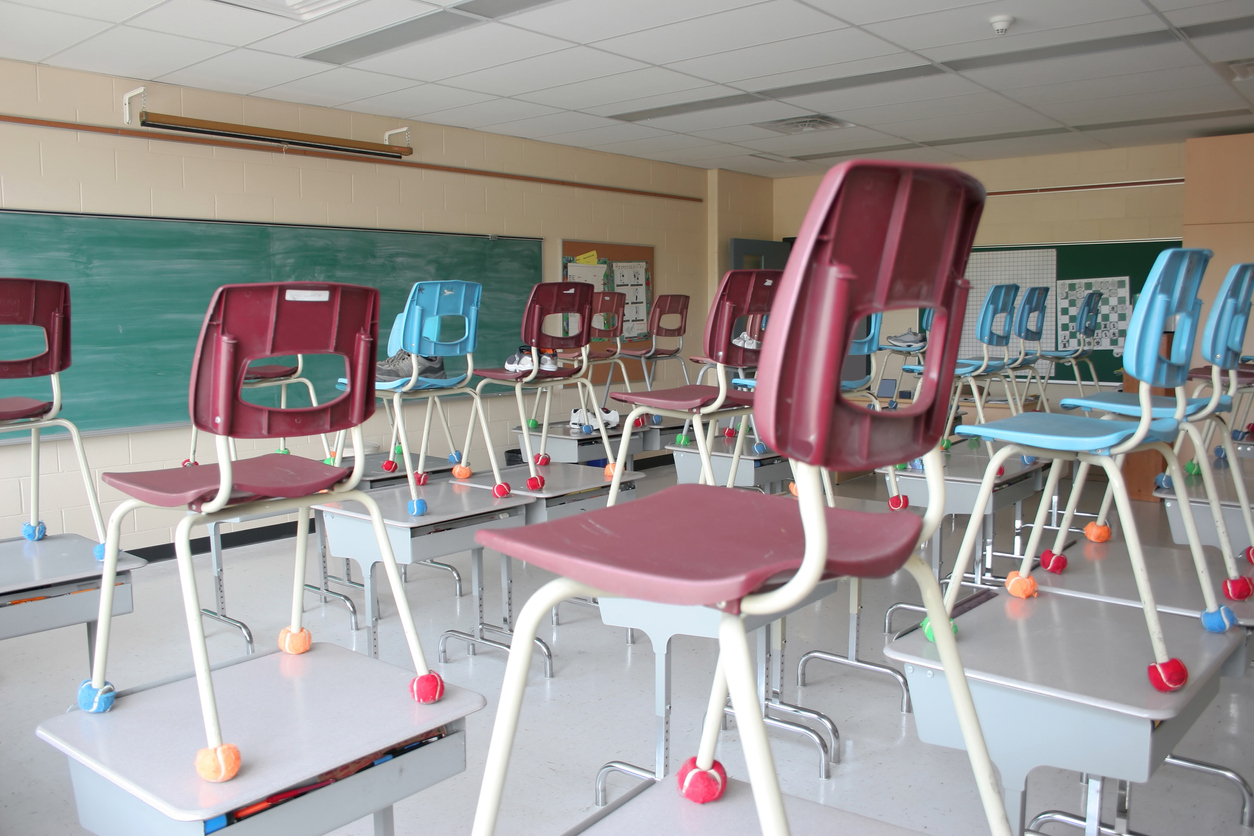TeacherVision's Head Of Content And Curriculum, Julie, shares her tips and best practices for wrapping up the school year. You may feel that there is too much to do and not enough time. Here's where and what to focus on.

Whether you have already started to count down the days or you haven't started thinking about how to wrap up the school year, here are my tips and strategies for where to focus your time and energy so you leave on the last day before summer feeling great about your finish.
Did you make a plan or goal in the beginning of the year, and now you are realizing you haven't prioritized it?
This happened to me every year I taught.
One year, I wanted to focus on making students' progress visible.
In an attempt to make my students’ progress visible to them, I gave each student a folder, and after I returned assignments and projects, I asked them to keep it in the folder. My goal was to make my students’ progress visible to them, so they had evidence of their growth. I have always believed that we need to help our students see that learning is a process that takes time. Whether or not they learned something isn’t always determined by a test grade.
Fast forward to the last two months of school, and I was in a rush to get through my curriculum. I was waking up in the middle of the night worried that we weren’t going to fit in one last essay or finish our last whole class novel. When was I going to find the time for students to look through their folders? How could I make this process meaningful and worth class time?
Quality Over Quantity
When you have limited teaching time left, you might feel pressure to pack it all in, and increase your pace. Instead of assigning one chapter, you assign two. Instead of spending fifteen minutes practicing grammar skills before the quiz, you cut it down to ten. While this is tempting, try to take a step back and consider the big picture, and prioritize.
Use These Guiding Questions
- What do my students need to learn and practice in order to be ready for next year?
- What parts of the curriculum are essential?
- What parts of the curriculum are non-essential?
One of the ways that I addressed having too much to teach and not enough time, was to assign related thematic passages from our last novel, instead of the entire text. I decided that what my students needed to learn and practice was close reading and marking up the text. They didn’t need to read an entire novel in order to do this practice.
Focus On What’s Important
Too often the end of the school year becomes a race to the finish, and there is little to no time to celebrate the class community and the students’ progress. What will impact your students most? A few more hours of grammar instruction? A reflective writing assignment where they consider what they learned and what goals they have for next year? Try to strike a balance between teaching topics and skills, and providing opportunities for celebration and reflection.
Make Student Progress Visible
Let’s go back to the folders. I believe that if we create a system and ask students to do something that we have to show them that that process had a purpose. If I didn’t circle back to the work in the folders why was I asking my students to keep their returned work? One of my favorite ways to make student progress visible is to take an assignment that I gave students earlier in the year and give them the same assignment towards the end of the year. For example, one of the first writing assignments I gave students was to write a descriptive paragraph about a photograph. I had an entire box full of images that they could choose from. Students do the same assignment later in the year and the improvement in their writing was always powerful. They included figurative language, and sensory details, and their grammar and syntax was stronger.
After students have completed the assignment for a second time, you have students put both assignments side by side. They can then see the progress that they’ve made. I like to give students a checklist of writing skills and topics and ask them to think about their progress in each of those areas. By the end of this exercise, students feel proud of themselves, especially students who thought they weren’t doing well or getting a good grade in my class. They had tangible proof of their own growth and the activity is both an opportunity for reflection and celebration.
Make Your Own Progress Visible
We never have enough time in our teaching days, and self-reflection always falls to the bottom of our to-do list. However, self-reflection is incredibly important at the end of the school year.
Consider all of your routines and procedures and identify what you want to use next year, and what you want to stop using or change. Try to jot down as much as you can about the specific changes you plan to make so your notes will be helpful as you prepare to return to the classroom.
Give Yourself Glows and Grows
Practice what you preach. We encourage our students to identify what they have learned and how they have grown, while also recognizing their challenges and the areas they can work on.
Think about this teaching year.
- What are you most proud of?
- Was there a new assignment that went really well?
- Did you figure out a system for grading that saved you time?
- Do you have a classroom routine for equitable participation that ensured you called on more students?
- Give credit where credit is due.
Consider also what didn’t go as well as you hoped.
- What are the areas of your teaching practice that you’d like to grow in?
- What might you do over the summer to learn more about these areas?
The last month of school is challenging. You might be feeling tired, and losing your passion and stamina for teaching. Despite the fatigue, consider trying some of these best practices so you wrap up your year in a thoughtful, and reflective way.
Do you have any tips for wrapping up the school year? Share with us on Instagram, Facebook, Twitter, and Pinterest.
Julie Mason is the Head of Content and Curriculum for TeacherVision. She brings expertise in blended and personalized learning, instructional coaching, and curriculum design to the role. She was a middle and high school English teacher for eight years and most recently taught at Dana Hall, an all-girls school in Wellesley, MA. She was a blended and personalized learning instructional coach for K-12 teachers at BetterLesson for two years, and she has presented at The National Principals Conference, ISTE, and ASCD where she shared her expertised on how instructional coaching builds teacher capacity in K-12 schools. She has extensive experience designing and facilitating professional development for teachers, and she oversees the TeacherVision advisory board.










